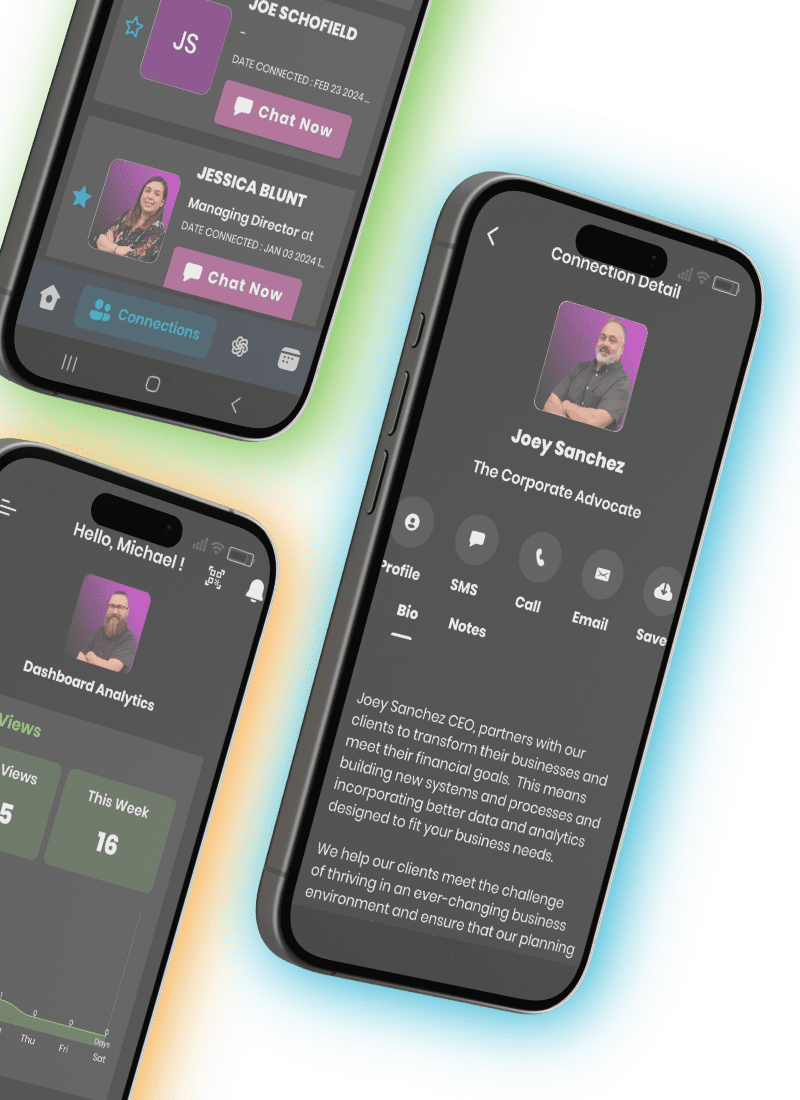In a world saturated with information and choices, individuals seeking to distinguish themselves face the formidable challenge of building a compelling personal brand. Whether you’re an entrepreneur, a professional, or a creative, cultivating a distinctive and authentic identity is key to standing out in the crowd. This article unveils a roadmap to help you navigate the intricacies of personal branding, offering nine actionable tips to fortify your presence and leave a lasting impression.
As the digital landscape continues to evolve, the need for a robust personal brand extends beyond traditional career paths. It influences how others perceive you, shapes your professional opportunities, and establishes the foundation for meaningful connections. Join us on a journey of self-discovery and strategic development as we explore practical insights to elevate your personal brand to new heights.
Are you ready to embark on the path to mastering your identity? Let’s delve into nine transformative tips that will empower you to not only define but also communicate your unique value to the world. It’s time to build a personal brand that resonates, captivates, and sets you apart from the rest.
Defining Your Unique Value Proposition (UVP)
In the realm of personal branding, clarity is power. Your Unique Value Proposition (UVP) serves as the cornerstone of your brand, articulating what sets you apart from the crowd. It’s the answer to the question, “Why should someone choose you over others?” Defining your UVP requires a deep dive into self-awareness and an honest evaluation of your strengths and skills.
Understanding Your UVP
Your UVP encapsulates the unique blend of qualities, skills, and experiences that make you distinctly valuable. Start by identifying your core competencies—those skills or attributes at which you excel. Consider what you are passionate about and how your passions align with your professional or personal goals.
Conveying Your Value Clearly
Clarity is paramount when communicating your UVP. Craft a succinct and compelling statement that encapsulates the essence of what you bring to the table. This statement should resonate with your target audience, providing them with a clear understanding of the benefits of engaging with you.
Examples of Effective UVPs
To illustrate the power of a well-defined UVP, let’s explore some examples. A technology consultant might emphasize their ability to simplify complex systems for clients, while a freelance writer could highlight their talent for transforming ideas into captivating narratives. These examples demonstrate the specificity and uniqueness that make a UVP memorable.
As you embark on this journey of self-discovery, remember that your UVP is not static. It should evolve as you grow personally and professionally. By investing time and thought into defining your UVP, you lay a solid foundation for a personal brand that authentically represents who you are and what you bring to the world.
Crafting a Compelling Personal Brand Statement
Your personal brand statement is the narrative that encapsulates the essence of who you are and what you offer. It’s a concise and compelling declaration that serves as the verbal cornerstone of your personal brand. Crafting an effective personal brand statement requires careful consideration of your values, aspirations, and the impact you aim to make.
Significance of a Personal Brand Statement
In a world inundated with information, a well-crafted personal brand statement becomes your beacon—a brief yet powerful expression that communicates your unique value proposition. This statement should resonate with your audience, leaving a lasting impression and providing a clear sense of your identity.
Steps to Create Your Personal Brand Statement
- Self-reflection: Start by reflecting on your core values, passions, and the impact you want to have. Consider the qualities that define you and make you stand out.
- Clarity in purpose: Define the purpose of your personal brand statement. What message do you want to convey, and to whom? A precise target audience ensures your statement is tailored and effective.
- Conciseness and impact: Keep your statement concise while ensuring it packs a punch. Aim for a balance between brevity and impact, capturing the essence of your brand in a few sentences.
Examples of Effective Personal Brand Statements
Let’s explore examples to understand how impactful personal brand statements are crafted. A marketing professional might declare, “I am the catalyst for brand stories that captivate and convert,” while a sustainability advocate could say, “I empower change-makers with eco-conscious solutions.” These examples showcase the power of clarity and purpose in personal brand statements.
Adapting Your Statement Over Time
As your personal brand evolves, so should your brand statement. Periodically revisit and revise it to ensure it aligns with your current goals and aspirations. This adaptability ensures your brand remains authentic and relevant.
Crafting a compelling personal brand statement is a pivotal step in building a strong personal brand. It serves as the verbal handshake, introducing you to the world and leaving a lasting impression. With this foundation in place, we move forward to explore the importance of establishing a consistent online presence.
Establishing a Consistent Online Presence
In today’s digital age, your online presence is often the first point of contact between you and the world. Building a strong personal brand necessitates not only a presence but a consistent and cohesive one across various online platforms. This section explores the importance of curating a unified digital identity.
The Significance of a Cohesive Online Presence
Your online presence is a virtual representation of your personal brand. Whether someone discovers you on LinkedIn, Instagram, or through a personal website, the experience should be seamless. Consistency instills confidence, helping your audience build trust in your brand.
Creating a Professional Website
A professional website is the anchor of your online presence. It provides a centralized hub where visitors can learn more about you, your achievements, and the value you offer. Ensure that your website reflects the visual and thematic elements consistent with your overall brand.
Optimizing Social Media Profiles
Social media is a powerful tool for personal branding. Each platform offers a unique opportunity to showcase different facets of your personality and expertise. Optimize your profiles with professional photos, cohesive branding elements, and a well-crafted bio that reinforces your personal brand.
Consistency Across Platforms
Whether it’s LinkedIn, Twitter, or any other platform, maintaining a consistent brand image is key. From profile pictures to the tone of your posts, align each element with your overarching brand identity. Consistency fosters recognizability and reinforces your brand message.
Engaging Authentically Online
Beyond visuals, authentic engagement is crucial. Respond promptly to messages and comments, share relevant content, and actively participate in discussions. Authenticity in your interactions reinforces the human side of your brand, fostering genuine connections.
Balancing Professionalism and Personality
While professionalism is vital, injecting a bit of personality into your online presence can make you more relatable. Share insights, hobbies, or behind-the-scenes glimpses to humanize your brand. Striking the right balance creates a memorable and authentic online persona.
Building a consistent online presence is not a one-time task but an ongoing effort. Regularly audit your profiles, update information, and refine your content strategy.
Leveraging Social Media Effectively
Social media has transformed the landscape of personal branding, offering unparalleled opportunities to connect, share, and engage with a global audience. This section delves into specific strategies for leveraging different social media platforms to amplify your personal brand.
Choosing the Right Platforms
Not all social media platforms are created equally, and each caters to a unique audience. Identify the platforms most relevant to your personal brand and industry. LinkedIn may be ideal for professionals, Instagram for creatives, and Twitter for those who thrive in concise and timely conversations.
Optimizing Your Profiles
Your social media profiles are extensions of your personal brand. Craft compelling bios that encapsulate your brand statement. Use professional yet approachable profile pictures, and ensure your handles are consistent across platforms. First impressions matter, and your profile is often the first thing someone sees.
Content Strategy for Personal Branding
Your content should reflect your brand’s voice and resonate with your target audience. Share valuable insights, industry news, and personal anecdotes that align with your brand identity. Consistency in posting and content quality is key to maintaining an engaged and growing audience.
Building a Strong Network
Social media is a powerful networking tool. Actively connect with professionals in your industry, join relevant groups, and participate in discussions. Building a strong network not only expands your reach but also opens doors to collaboration and opportunities aligned with your personal brand.
Engaging Authentically
Authenticity is the cornerstone of effective personal branding on social media. Share your journey, successes, and even failures transparently. Engage with your audience genuinely by responding to comments, asking questions, and acknowledging others in your network.
Utilizing Visuals for Impact
Visual content often speaks louder than words. Leverage high-quality images, infographics, and videos to convey your brand message. Visual consistency, such as using a consistent color palette or style, reinforces your brand identity and makes your content easily recognizable.
Measuring and Adjusting Strategies
Social media is dynamic, and what works today may need adjustment tomorrow. Regularly analyze the performance of your posts, track engagement metrics, and adjust your strategy accordingly. This adaptability ensures your social media efforts align with your evolving personal brand.
By strategically navigating the social media landscape, you can amplify your personal brand’s reach and impact. As we progress, the next section will delve into the power of showcasing your expertise through content creation as a potent tool in personal branding.
Showcasing Your Expertise through Content
In the digital era, content is not just king; it’s the currency of influence. Creating and sharing valuable content positions you as an authority in your field, attracting your target audience and reinforcing your personal brand. This section explores the strategies and platforms for effectively showcasing your expertise through content.
Choosing Your Content Platforms
Identifying the right platforms for your content is crucial. Whether it’s a blog, podcast, YouTube channel, or a combination, choose platforms aligned with your strengths and where your target audience is most active. Consistency across platforms reinforces your brand identity.
Defining Your Content Niche
Clearly define the niche or themes for your content. Your niche should align with your expertise and resonate with your audience. It’s not just about what you say but how your content adds value and addresses the pain points or interests of your audience.
Creating High-Quality Content
Quality over quantity should be your mantra. Develop content that showcases your expertise, provides actionable insights, and engages your audience. Invest time in research, ensure your content is well-written or well-produced, and aligns with the standards of your personal brand.
Building a Content Calendar
Consistency is key in content creation. Develop a content calendar that outlines your posting schedule, topics, and the mediums you’ll use. A well-thought-out calendar helps you stay organized, maintain regular engagement, and ensure your audience knows when to expect new content.
Leveraging Multiple Content Types
Diversify your content to cater to different preferences. If you’re comfortable on camera, consider video content. If writing is your strength, focus on blogs. Podcasts are great for those with strong verbal communication skills. Offering variety ensures you reach a broader audience.
Promoting Your Content Effectively
Creating content is just the first step; effective promotion is equally crucial. Share your content across your social media channels, engage with your audience’s comments, and explore collaborations with influencers or other content creators in your niche.
Measuring Content Performance
Regularly assess the performance of your content. Analyze metrics such as views, engagement, and shares. Understand what resonates with your audience and tailor your future content accordingly. Data-driven insights refine your content strategy and strengthen your personal brand.
Meet the Enriched Contact Platform
Get Your Free SyncVIP Profile Now!
Sign up for your free VIP profile now and start making connections that matter.
By consistently delivering valuable content, you position yourself as an authority in your domain.
Networking Strategically
In the world of personal branding, networking is not just about exchanging business cards or connecting on LinkedIn. It’s a strategic art that involves building genuine, mutually beneficial connections. This section explores the importance of networking in personal branding and provides actionable strategies for effective networking.
Understanding the Importance of Networking
Networking goes beyond traditional notions of professional relationships; it’s about cultivating a community of individuals who share common interests, goals, or industries. A strong network not only opens doors to opportunities but also provides support, insights, and diverse perspectives crucial for personal growth.
Building Meaningful Connections
Quality triumphs over quantity when it comes to networking. Focus on building meaningful connections by taking a genuine interest in others. Attend industry events, join professional groups, and participate in online forums to connect with like-minded individuals.
Utilizing Online Platforms for Networking
In the digital age, online platforms offer unparalleled networking opportunities. Engage in conversations on LinkedIn, participate in Twitter chats, and join relevant Facebook or Slack groups. Actively contribute to discussions and share your expertise to establish your presence.
Effective Networking Communication
When networking, effective communication is key. Craft an elevator pitch that succinctly communicates your personal brand and what you’re seeking. Ask open-ended questions to learn more about others, showcasing your genuine interest in their experiences and expertise.
Following Up and Nurturing Relationships
Networking doesn’t end after exchanging business cards or connecting online. Follow up with your contacts, express gratitude for their time, and nurture the relationship over time. This might involve sharing relevant content, helping, or simply maintaining regular communication.
Strategic Collaboration and Partnerships
Collaboration can be powerful in expanding your network. Identify opportunities for strategic partnerships with individuals or organizations that align with your personal brand. Joint ventures, co-hosted events, or shared projects can amplify your reach and impact.
Giving Back to the Network
Contributing to your network’s success is a hallmark of effective networking. Share insights, provide support, and celebrate the achievements of others. A generous and giving approach not only strengthens your relationships but also enhances your personal brand as a valuable member of the community.
Networking is an ongoing process that requires patience and authenticity. As we delve deeper into the journey of personal branding, the next section explores the importance of continuous learning and development in shaping a robust personal brand.
Invest in Continuous Learning and Development
In the ever-evolving landscape of personal branding, staying relevant is paramount. Continuous learning and development not only enhance your skills but also contribute to the evolution of your personal brand. This section explores the importance of embracing a mindset of lifelong learning and provides actionable steps for continuous development.
The Dynamic Nature of Personal Branding
Personal branding is not a static concept; it evolves with industry trends, technological advancements, and personal growth. Embracing continuous learning ensures that your personal brand remains adaptive, relevant, and capable of meeting the challenges of an ever-changing environment.
Identifying Areas for Improvement
Self-awareness is the first step towards continuous improvement. Regularly assess your skills, knowledge, and areas where you can enhance your expertise. This self-reflection allows you to identify gaps and set targeted goals for personal and professional development.
Exploring Diverse Learning Resources
Diversify your learning resources to gain a holistic perspective. Engage in formal education, attend workshops, enroll in online courses, and participate in webinars. Additionally, seek out industry conferences, podcasts, and thought leadership articles to stay informed about the latest trends and insights.
Networking as a Learning Tool
Networking isn’t just about building relationships; it’s also a powerful learning tool. Engage with professionals in your industry, participate in discussions, and leverage the knowledge of your network. Networking exposes you to different perspectives and valuable insights that contribute to your continuous development.
Setting and Tracking Learning Goals
Establish clear learning goals aligned with your personal and professional objectives. Whether it’s acquiring a new skill, staying updated on industry trends, or delving into a new area of expertise, set measurable goals. Regularly track your progress to ensure you stay on course.
Embracing Feedback and Iteration
Feedback is a valuable catalyst for growth. Embrace constructive criticism, seek feedback from mentors and peers, and use it to iterate and refine your personal brand. The ability to adapt based on feedback showcases your commitment to improvement and growth.
Documenting Your Learning Journey
Create a repository to document your learning journey. Whether it’s a journal, a blog, or a digital portfolio, recording your experiences, insights, and acquired skills provides a tangible record of your continuous development. It also serves as a testament to your commitment to growth.
Investing in continuous learning and development not only enhances your skills but also positions you as a dynamic and forward-thinking individual.
Seek and Showcase Testimonials
In the realm of personal branding, building credibility is a continuous journey. Testimonials serve as powerful endorsements, providing evidence of your skills, professionalism, and the impact you’ve had on others. This section explores the significance of testimonials and offers strategies for seeking and showcasing them to strengthen your personal brand.
The Role of Testimonials in Personal Branding
Testimonials are more than just quotes; they are social proof of your competence and reliability. They build trust, validate your claims, and offer potential collaborators or clients a glimpse into the positive experiences others have had while engaging with your personal brand.
Strategies for Collecting Testimonials
- Proactive Requesting: Don’t be shy about asking satisfied clients, colleagues, or collaborators for testimonials. Reach out with a personalized request, specifying the aspects of your collaboration or services you’d like them to highlight.
- Timing is Key: Request testimonials when the positive experience is still fresh in their minds. Whether it’s after a successful project, a collaboration, or the achievement of a milestone, timing plays a crucial role in securing authentic and enthusiastic testimonials.
- Diversify Sources: Seek testimonials from various sources—clients, colleagues, mentors, or those you’ve collaborated with on projects. Diversifying your sources adds credibility and showcases the broad impact of your personal brand.
Showcasing Testimonials Effectively
- Create a Testimonials Section: Dedicate a section on your website or portfolio to showcase testimonials. Make it easily accessible and prominently displayed to ensure that visitors see positive feedback right away.
- Utilize Social Proof on Social Media: Share snippets of testimonials on your social media platforms. Visual testimonials or short quotes paired with impactful visuals can capture attention and reinforce your personal brand.
- Incorporate Testimonials in Your Brand Story: Integrate testimonials into your overall brand narrative. Highlight specific achievements or instances where your personal brand made a positive impact, using testimonials as supporting evidence.
Building Trust Through Testimonials
Testimonials contribute significantly to building trust—a cornerstone of a strong personal brand. When prospective clients or collaborators see positive feedback from others, it instills confidence and reassures them that engaging with your personal brand is a wise decision.
Regularly Update Testimonials
As your personal brand evolves, so should your collection of testimonials. Regularly update your portfolio with fresh endorsements to reflect your continuous growth and the ongoing positive impact of your personal brand.
In the final stretch of our exploration, we’ll delve into the importance of monitoring and adapting your personal brand, recognizing that the dynamic nature of personal branding requires vigilance and strategic adjustments.
Monitor and Adapt Your Brand
In the dynamic landscape of personal branding, staying vigilant and adaptable is essential. This section explores the importance of regularly monitoring the performance of your personal brand, understanding the signals that indicate change, and adapting strategically to ensure your brand remains relevant and impactful.
The Dynamic Nature of Personal Branding
Personal branding is not a one-time effort; it’s an ongoing process. External factors, industry trends, and personal growth can influence the perception of your brand. Regular monitoring allows you to stay ahead of changes and adapt proactively.
Tools and Techniques for Monitoring
- Google Alerts: Set up Google Alerts for your name and relevant keywords. This tool notifies you whenever new content containing these keywords is published online, allowing you to stay informed about mentions of your personal brand.
- Social Media Analytics: Leverage analytics tools on social media platforms to track the performance of your posts, engagement levels, and audience demographics. Insights gained from analytics help you understand what content resonates most with your audience.
- Website Analytics: If you have a personal website, use analytics tools such as Google Analytics to track visitor behavior. Analyzing metrics like page views, bounce rates, and popular content provides valuable insights into your online presence.
Listening to Feedback
Actively seek and listen to feedback from your audience, peers, and mentors. Feedback, whether positive or constructive, offers valuable insights into how your personal brand is perceived. Use this information to refine your brand message and adapt to evolving expectations.
Evaluating Industry Trends
Stay abreast of industry trends and shifts in your field. What may have been relevant a year ago might not be today. Being aware of emerging trends allows you to position your personal brand in alignment with the current needs and expectations of your target audience.
Strategic Adaptation
Adapting your personal brand doesn’t mean compromising authenticity; it’s about staying relevant. Whether it’s updating your visual identity, refining your brand message, or exploring new platforms, strategic adaptation ensures your brand remains dynamic and resonant.
Pivoting when Necessary
There may come a time when a significant pivot in your personal brand is necessary. This could be due to a change in career focus, a shift in personal values, or a desire to explore new opportunities. Embrace these pivots as opportunities for growth and evolution.
Continuous Iteration and Improvement
The monitoring and adaptation process is iterative. Regularly revisit your personal brand strategy, evaluate its effectiveness, and make informed adjustments. Continuous iteration ensures that your personal brand remains a powerful and relevant force.
In conclusion, building a strong personal brand is an ongoing journey that requires dedication, self-awareness, and adaptability. By incorporating these tips into your personal branding strategy, you’ll be well-equipped to navigate the dynamic landscape and craft a personal brand that not only stands the test of time but continues to evolve and thrive.
Conclusion
As we conclude this exploration into the art of personal branding, it’s evident that building a strong personal brand is not a static achievement but an ongoing journey. The nine tips we’ve discussed—ranging from defining your Unique Value Proposition (UVP) to strategically adapting your brand—serve as a comprehensive guide for those committed to mastering their identity in the professional realm.
Your personal brand is a living entity, evolving with each experience, achievement, and lesson learned. It’s a reflection of your unique strengths, passions, and the value you bring to the world. By defining your UVP, crafting a compelling personal brand statement, and establishing a consistent online presence, you lay the foundation for a brand that resonates authentically.
Effectively leveraging social media, showcasing your expertise through content creation, and networking strategically amplify your brand’s reach and impact. Continuous learning and development ensure that your skills remain sharp, and seeking and showcasing testimonials builds the credibility necessary for a robust personal brand.
Monitoring and adapting your brand in response to changing circumstances and industry trends is the final, critical step in this journey. Your personal brand is a dynamic force, and the ability to pivot when necessary and embrace continuous iteration ensures that it remains not only relevant but also ahead of the curve.
Remember, personal branding is a holistic endeavor that requires a delicate balance of strategy, authenticity, and adaptability. As you embark on this journey, be patient with yourself, celebrate your successes, learn from your challenges, and most importantly, let your personal brand reflect the authentic and extraordinary individual that you are.
Mastering your identity is a lifelong pursuit, and with these nine tips as your compass, you’re well on your way to building a personal brand that stands out, captivates, and leaves an indelible mark on the professional landscape. Here’s to the continued evolution of your personal brand and the impactful journey that lies ahead.















